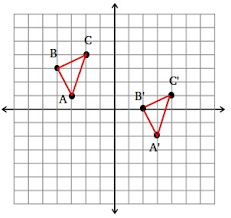
What is the transformation that maps ABC to A'B'C'?
The transformation that maps ABC to A'B'C' is a translation of 6 units to the right and 3 units down.
(x, y) ----> (x + 6, y - 3)
Reflect across the x -axis. Where would the coordinates of D' be?
The coordinates of D' would be (1, -2).
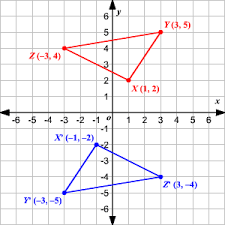
How was the triangle transformed?
The triangle was transformed by a rotation of 1800 about the origin.
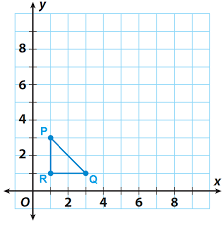
What would the coordinates of R' be if the triangle is dilated by a scale factor of 5.
The coordinates of R' would be (5,5) if the triangle were dilated by a scale factor of 5.
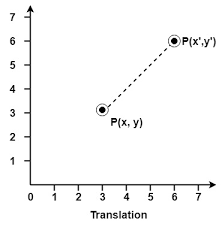
How can the transformation that maps point P to P' be best described?
The transformation that maps point P to P' is can be best described as a translation of 3 units to the right and 3 units up.
(x, y) ----> (x + 3, y + 3)
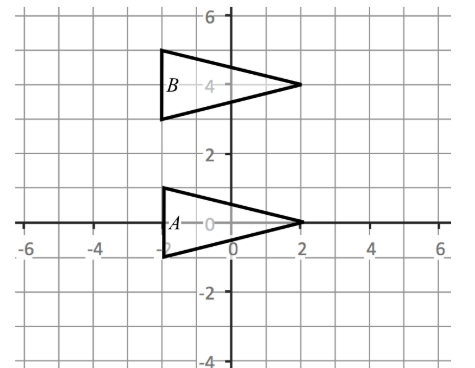
What is the line of reflection that maps A onto B?
The line of reflection that maps A onto B is the line y = 2.
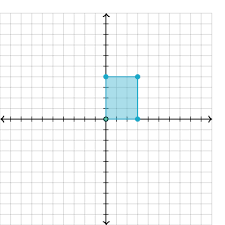
If we perform a rotation of 900 CCW about the origin, in which quadrant will the quadrilateral be?
If we perform a rotation of 900 CCW about the origin, the quadrilateral will be in quadrant II.
What's the scale factor that maps the original to the copy?
The scale factor that maps the original to the copy is 3.
How should the yellow triangle be moved to be mapped to the blue triangle?
The yellow triangle should be translated 12 units to the left and 12 units down to be mapped to the blue triangle.
(x, y) ---> (x - 12, y - 12)
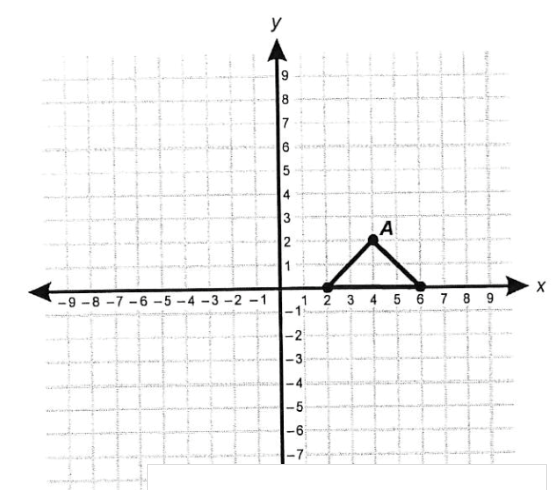
If the triangle were reflected across the line x = -2, in which quadrant would the triangle be?
If the triangle were reflected across the line x = -2, the triangle would be in quadrant II.
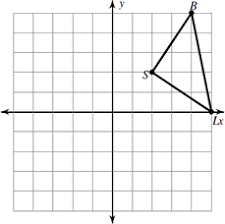
If you rotate triangle BLS 900 CW about the origin, what would the coordinates of B' be? (axes are scaled by 1)
If you rotate triangle BLS 900 CW about the origin, the coordinates of B' would be (5,-4).
What's the scale factor that maps the pre-image to the image?
The scale factor that maps the pre-image to the image is 1/2.
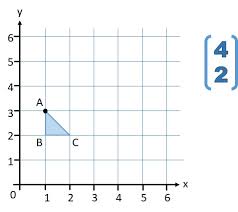
If we would perform a translation of the following rule, (x, y) ---> (x + 4, y + 2), what would be the coordinates of A'?
If we would perform a translation of the following rule, (x, y) ---> (x + 4, y + 2), the coordinates of A' would be (5, 5).
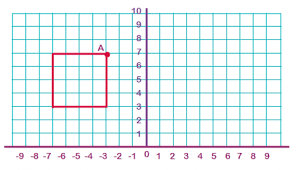
If we perform a reflection across the y-axis, where would the coordinates of A' be?
If we perform a reflection across the y-axis, the coordinates of A' would be at (3, 7).
How can the transformation be described?
The transformation can be described as a rotation of 900 CCW or 2700 CW about the origin.
If you dilate ABC by a scale factor of 1/3, what would the coordinates of C' be?
If you dilate ABC by a scale factor of 1/3, the coordinates of C' would be (1, 1).
